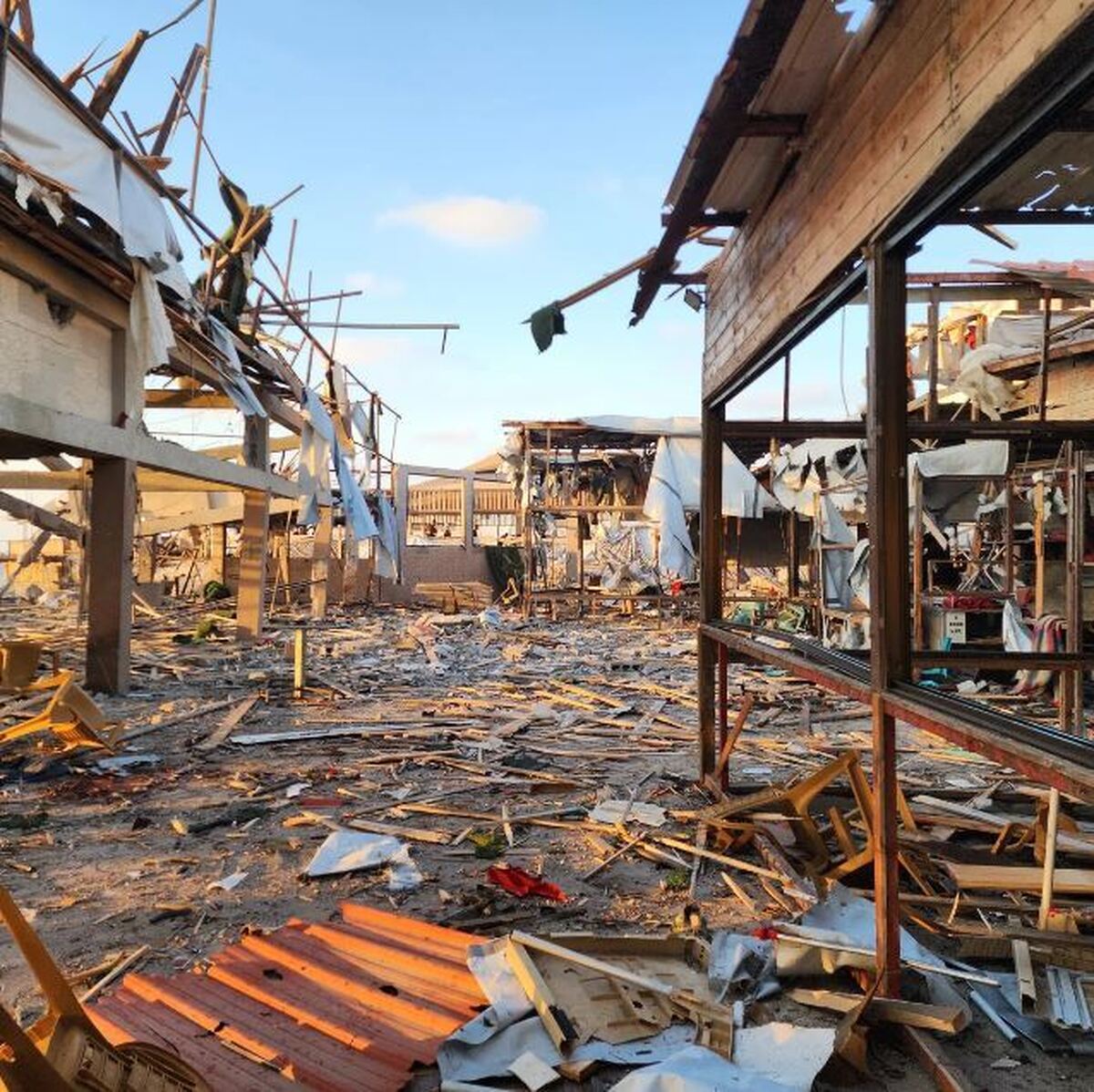‘Indiscriminate and Illegal’: 500lb U.S. bomb used in Gaza café attack

Leaked evidence reveals that during a recent strike on a café in Gaza, the Israeli military used a 500-pound (230 kg) bomb — a powerful, unguided weapon that creates a massive blast wave and disperses shrapnel across a wide area.
International law experts state that using such munitions in a location known to be filled with unarmed civilians, including children, women, and the elderly, is illegal and could constitute a war crime.

Fragments of the weapon found in the rubble of the Al-Baqaa café — photographed by The Guardian — were identified by munitions experts as parts of a 230-kilogram multi-purpose MK-82 bomb, a U.S.-made bomb widely used in airstrikes over recent decades.
Two munitions specialists stated that the large crater created by the explosion provides further evidence that a large, powerful bomb like the MK-82 was used.
Medical sources and other officials reported that between 24 and 36 Palestinians were killed in the café strike, and dozens more were injured. Victims included a filmmaker and a well-known artist, a 35-year-old housewife, and a 4-year-old child. Among the injured were a 14-year-old boy and a 12-year-old girl.
Under international law, based on the Geneva Conventions, a military force is prohibited from conducting attacks that result in "incidental loss of civilian life" that is "excessive or disproportionate" relative to the anticipated military advantage.

Gary Simpson from Human Rights Watch said: "The Israeli military hasn’t specified exactly who it was targeting but claimed to have used aerial surveillance to minimize civilian casualties — which means they knew the café was full of people at the time. The army also knew that using a large air-dropped guided bomb would kill and maim many civilians present."
He added that the use of such a large weapon in a clearly crowded café risks being considered an unlawful, disproportionate, or indiscriminate attack and should be investigated as a war crime.
Andrew Ford, Assistant Professor of Human Rights Law at Dublin City University, said: "This attack was shocking. When you see heavy munitions used in a busy civilian setting — even with the best targeting in the world — it necessarily results in indiscriminate outcomes that do not comply with the Geneva Conventions."
Mark Schack, Associate Professor of International Law at the University of Copenhagen, commented: "It is almost impossible to justify the use of such munitions. If you’re talking about 20, 30, or 40 civilian casualties, the military target would need to be of extremely high value. Even in Afghanistan and Iraq, coalition forces accepted no more than 30 civilian deaths — and only under exceptional circumstances."
Trevor Ball, a weapons researcher and former U.S. Army explosive ordnance disposal technician, identified an end section and a thermal battery at the site, which he said suggests either an MPR500 or an MK-82 bomb was used.
Another munitions expert with extensive experience in recent conflicts confirmed a similar identification of the bomb.